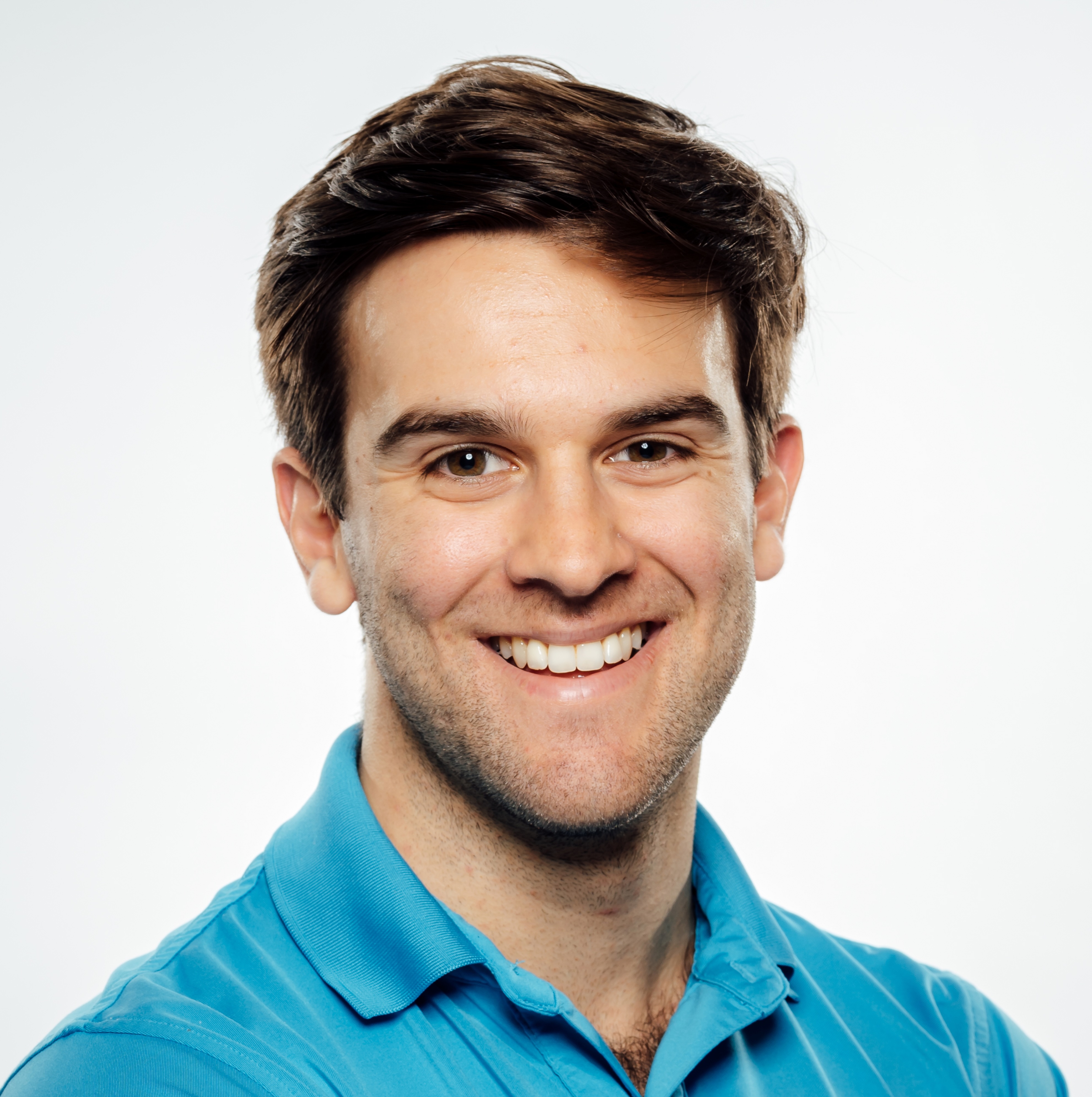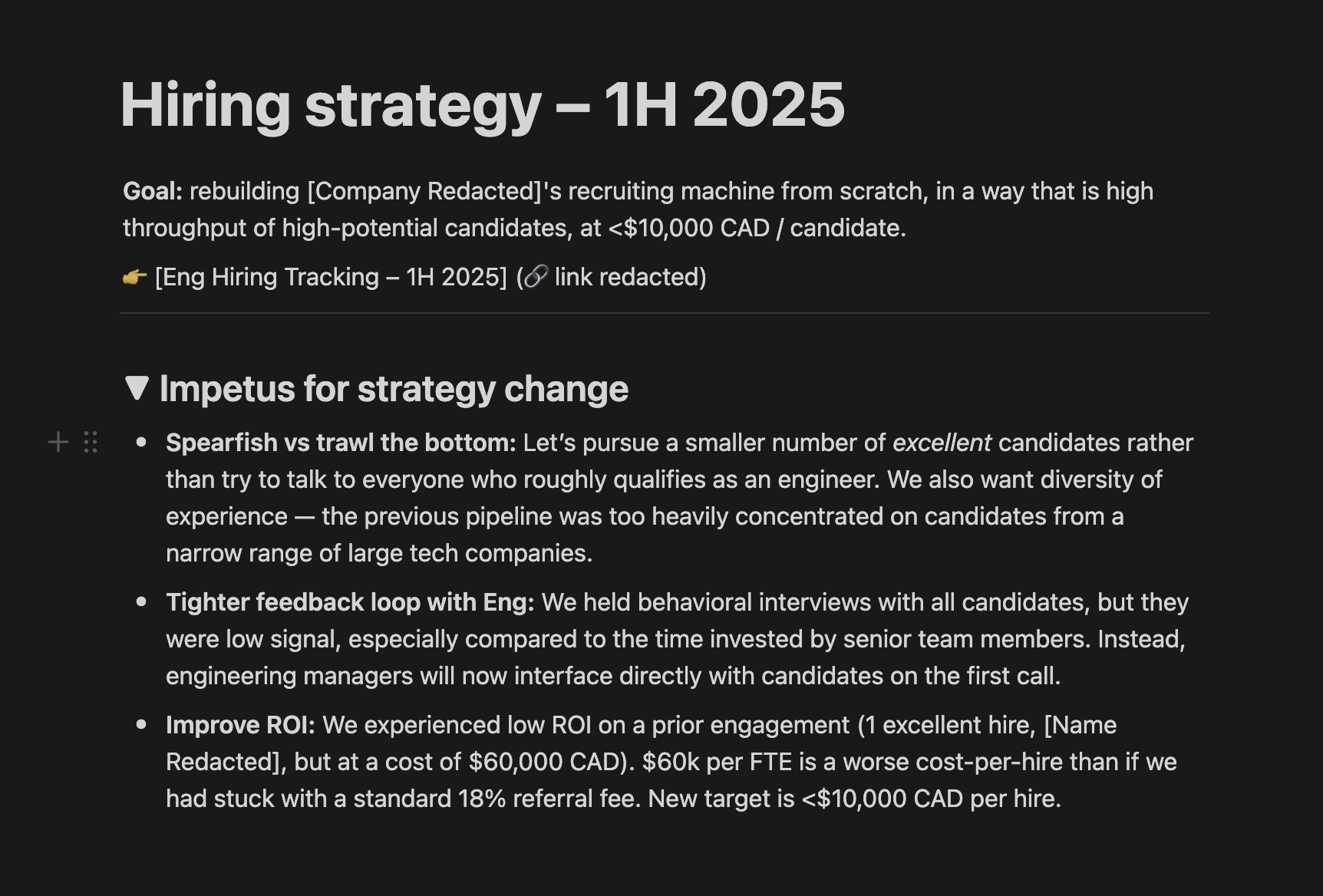Meet Kyle Tymoszewicz

Kyle Tymoszewicz brings a product manager's mindset to recruiting at Integral, where he's COO overseeing a 20-person team. His unconventional path—IBM sales, Shopify ecosystem startup, ML product management in London—taught him to treat hiring like any other high-stakes business process: with clear requirements, measurable outcomes, and relentless optimization.
His breakthrough: reducing cost-per-hire by 6x while improving quality by applying product management fundamentals to talent acquisition.
His core belief: Recruiting is paid acquisition for talent. Every dollar spent on hiring should be tracked, optimized, and measured like customer acquisition—with clear funnel metrics, conversion rates, and ROI targets.
Key Takeaways
Write a PRD for your recruiting process
Most founders wing recruiting or copy someone else's playbook. Kyle wrote a formal Product Requirements Document treating hiring like a product launch.
"I didn't even realize it, but I just wrote a PRD for recruiting. The doc I sent you... We can include an anonymized version to show to readers. "

His recruiting PRD includes:
- Ideal candidate characteristics (specific, not generic)
- Sourcing strategy and channel priorities
- Funnel stages with conversion targets
- Success metrics and failure signals
- Resource allocation and timeline
Action for founders: Before your next hire, write a one-page PRD. Define what success looks like, how you'll measure it, and what trade-offs you're willing to make.
Let engineering own the hiring criteria
Kyle learned that external recruiters were filtering for the wrong things, company prestige over actual experience solving similar problems. His solution: engineers write the questions.
"Any of the notes that were taken around their experiences to date were basically just being thrown away by our engineers and they would want to ask and verify themselves."
The new system:
- Engineering writes all technical screening questions
- All screens are recorded for async engineering review
- Higher conversion rates from first to second technical rounds
- Zero time wasted on "engineering can't verify this" candidates
Action for founders: Have your technical leads write the actual questions they want answered. If they don't like your screening process, they should own building a better one.
Tie every hire to revenue
Kyle's most disciplined practice: no hiring without revenue justification. Every headcount decision gets mapped to closed deals or high-confidence pipeline.
"At our stage, a lot of our hiring is tied to actual revenue or forecasted revenue... I'm optimizing for the long-term health of business."
His process:
- Weekly revenue/pipeline reviews with engineering leadership
- Headcount conversations triggered by deal closures
- "What do you need most?" discussions only after budget is secured
- No aspirational hiring ahead of realistic growth projections
Action for founders: Create a simple spreadsheet linking every planned hire to specific revenue milestones. No revenue justification = no hire approval.
Compress screens and eliminate redundancy
Kyle discovered they were burning candidate goodwill with hour-long recruiter screens that engineers would re-do anyway. His fix: 15-minute screens, recorded for async review.
"We took the hour-long structure and compressed it to 15 minutes with someone on our team. We record the interview and anyone that seems remotely promising, we have engineering review that recording and notes afterwards."
The impact:
- Candidates don't repeat their story multiple times
- Engineers get the context they need without blocking their schedule
- Much higher conversion from first engineering touchpoint to second round
- Zero "we already covered this" friction
Action for founders: Map your current interview process. Anywhere candidates repeat information, you're wasting their time and yours. Record early stages for async review by decision-makers.
Build your local talent community
While others chase big conferences and expensive recruiters, Kyle focuses obsessively on second-degree connections in Toronto.
"We doubled down on LinkedIn and related tools to map out our networks... It's easier to sell your company and your vibe when you can bring someone into the office and or just go meet them."
His local-first strategy:
- Map every team member's LinkedIn connections
- Prioritize warm introductions over cold outreach
- Coffee meetings and office visits for serious candidates
- Steak dinners for final-stage candidates ("I can do so many steak dinners relative to a 40k" recruiter fee)
Action for founders: Before hiring any external recruiters, exhaustively map your team's networks. Schedule in-person meetings with promising second-degree connections.
Maintain your "top 3 hires" list
Kyle requires engineering leadership to always know their next three priority hires—not for active recruiting, but for opportunity readiness.
"My ask is: always know who your top three hires are... I never want to be caught off guard."
The system:
- Engineering maintains rolling list of next three most-needed roles
- Passive conversations with potential candidates for these roles
- Different messaging for "getting to know you" vs "actively hiring"
- Immediate activation when budget/business justification appears
Action for founders: Ask your technical leads right now: "What are your top three hiring priorities for the next 18 months?" If they can't answer immediately, that's your first problem to solve.
Metrics that matter
Cost efficiency:
- Cost per hire (Kyle achieved 6x reduction)
- Recruiter fees as % of successful hires
- Internal vs external sourcing conversion rates
Process velocity:
- Time from first conversation to final decision
- Conversion rates between each interview stage
- Days from "we need this role" to "we have pipeline"
Quality indicators:
- 90-day retention rate for new hires
- Engineering team satisfaction with candidate quality
- Percentage of hires exceeding 6-month performance expectations
Key takeaways
✅ Recruiting is a product, not a process. Write requirements, measure outcomes, iterate based on data.
✅ Engineers should own technical hiring criteria. If they can't verify your screening, you're screening wrong.
✅ Revenue discipline prevents over-hiring. Every headcount needs a business justification, not just a business case.
✅ Local beats global for early-stage companies. Exhaust your networks before paying recruiters.
✅ Record everything you can. Async review saves everyone time and eliminates repetitive candidate experiences.
Pro tips
💡 Use Clay for recruiting lead gen. Score candidates on company relevance and experience fit before manual outreach.
💡 Compress initial screens to 15 minutes. Anything longer is probably redundant with later stages.
💡 Integrate recruiting with sales infrastructure. If you're building lead gen for customers, use the same tools for candidates.
💡 Pay for high-touch experiences over high-touch services. Steak dinners convert better than expensive recruiter relationships.
Need help hiring crypto talent? Post a job on Hirechain for free and get pre-qualified candidates that are worth your time.


.png)
